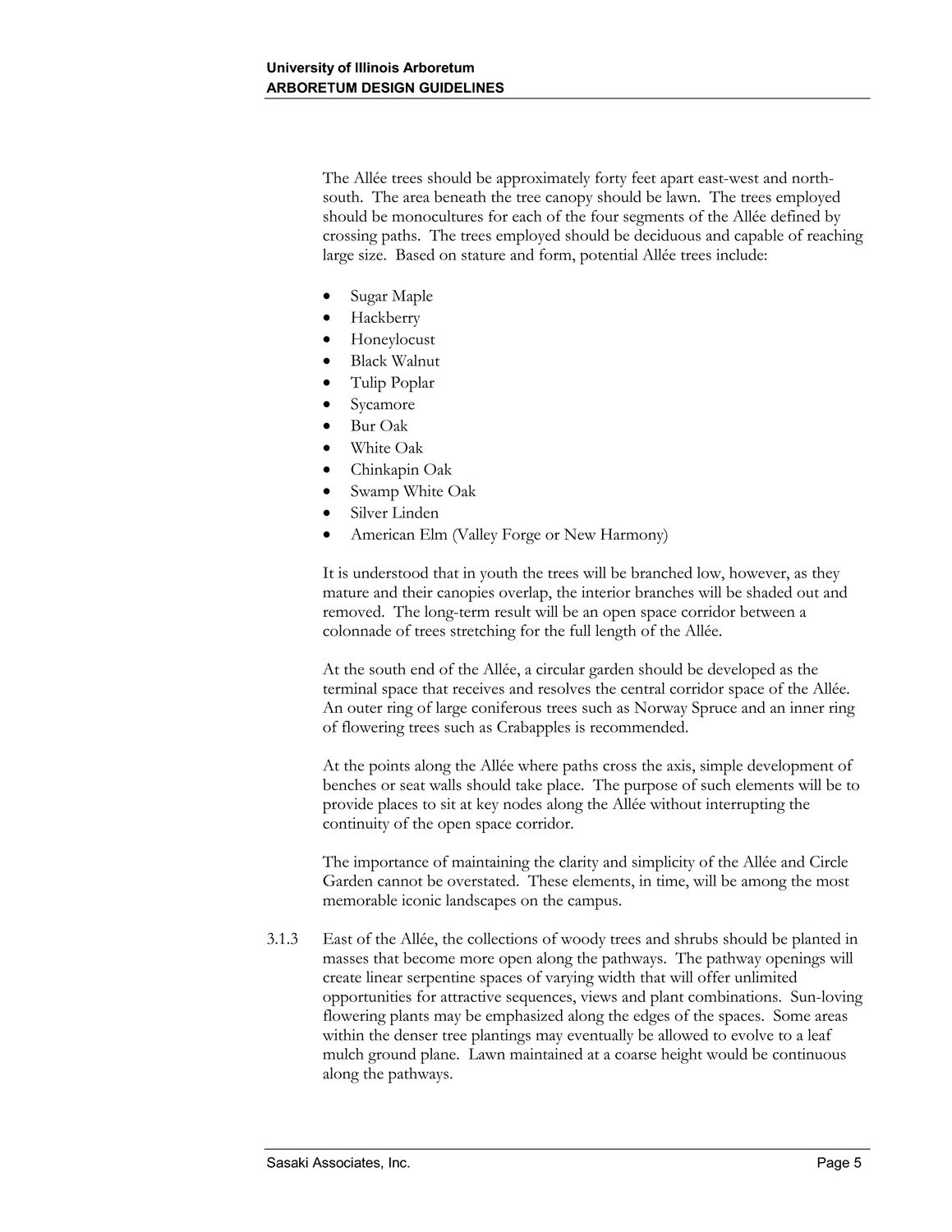| |
| |
Caption: Map of UIUC (2001) (Arboretum)
This is a reduced-resolution page image for fast online browsing.

EXTRACTED TEXT FROM PAGE:
University of Illinois Arboretum ARBORETUM DESIGN GUIDELINES The Allée trees should be approximately forty feet apart east-west and northsouth. The area beneath the tree canopy should be lawn. The trees employed should be monocultures for each of the four segments of the Allée defined by crossing paths. The trees employed should be deciduous and capable of reaching large size. Based on stature and form, potential Allée trees include: • • • • • • • • • • • • Sugar Maple Hackberry Honeylocust Black Walnut Tulip Poplar Sycamore Bur Oak White Oak Chinkapin Oak Swamp White Oak Silver Linden American Elm (Valley Forge or New Harmony) It is understood that in youth the trees will be branched low, however, as they mature and their canopies overlap, the interior branches will be shaded out and removed. The long-term result will be an open space corridor between a colonnade of trees stretching for the full length of the Allée. At the south end of the Allée, a circular garden should be developed as the terminal space that receives and resolves the central corridor space of the Allée. An outer ring of large coniferous trees such as Norway Spruce and an inner ring of flowering trees such as Crabapples is recommended. At the points along the Allée where paths cross the axis, simple development of benches or seat walls should take place. The purpose of such elements will be to provide places to sit at key nodes along the Allée without interrupting the continuity of the open space corridor. The importance of maintaining the clarity and simplicity of the Allée and Circle Garden cannot be overstated. These elements, in time, will be among the most memorable iconic landscapes on the campus. 3.1.3 East of the Allée, the collections of woody trees and shrubs should be planted in masses that become more open along the pathways. The pathway openings will create linear serpentine spaces of varying width that will offer unlimited opportunities for attractive sequences, views and plant combinations. Sun-loving flowering plants may be emphasized along the edges of the spaces. Some areas within the denser tree plantings may eventually be allowed to evolve to a leaf mulch ground plane. Lawn maintained at a coarse height would be continuous along the pathways. Sasaki Associates, Inc. Page 5
| |